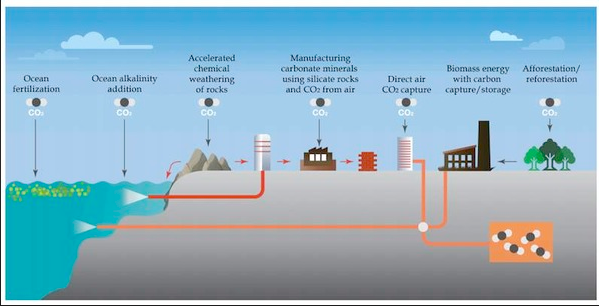The term certainly seems to be an oxymoron, a contradiction on its face. For “emissions” means putting something into circulation. For example, greenhouse gases (GHG) are gases from the burning of fossil fuels that are discharged, or emitted, into the atmosphere with dire consequences. So how can we discharge negative gases?
The answer is that the term is used to refer to means of actually reducing the level of GHGs in the atmosphere after they have been emitted into the atmosphere. Or put another way, it refers to the act of removing GHGs from the atmosphere.
The importance of the concept is that our efforts to reduce the level of GHGs in the atmosphere, to keep global temperatures from rising above 1.5 or 2.0 degree Celsius (C) over pre-industrial levels, is not working. Since it seems likely we will not reduce GHGs in the atmosphere, we will have to remove the GHGs from the atmosphere in order to lower the global temperature.

Examples of creating negative emissions are planting trees, that soak up and remove carbon from the atmosphere, and bioenergy with carbon capture and storage (BECCS), where biomass (e.g., wood) is used to generate energy for heat and power and the carbon from that process is captured before reaching the atmosphere and stored in underground rock or other formations.
A danger of relying on negative emissions is that people will give up on trying to reduce the levels of GHGs before they are emitted.
Some further ideas to explore on Negative Emissions:
What forms of negative emissions are currently being used?
Which process is considered the most efficient and workable form of negative emissions?
Are there adverse impacts from negative emissions and, if so, what are they?
Sources:
“What Are Negative Emissions?” Environmental Technology (29 Oct 2017). bit.ly/2x25c0D
Akshat Rathi, “The ultimate guide to negative-emission technologies,” Quartz (8 Oct 2018). bit.ly/32DEVS1
FACTSHEET: BIOENERGY WITH CARBON CAPTURE AND STORAGE (12 March 2018). United States Dept of Agriculture bit.ly/2uNQbig


No comments yet, add your own below